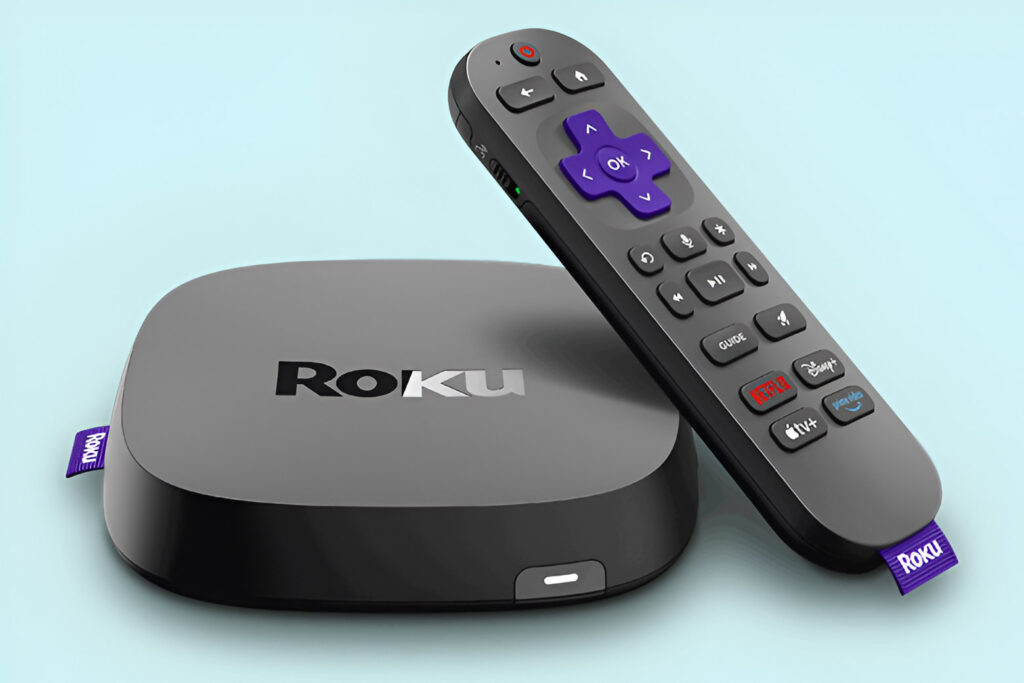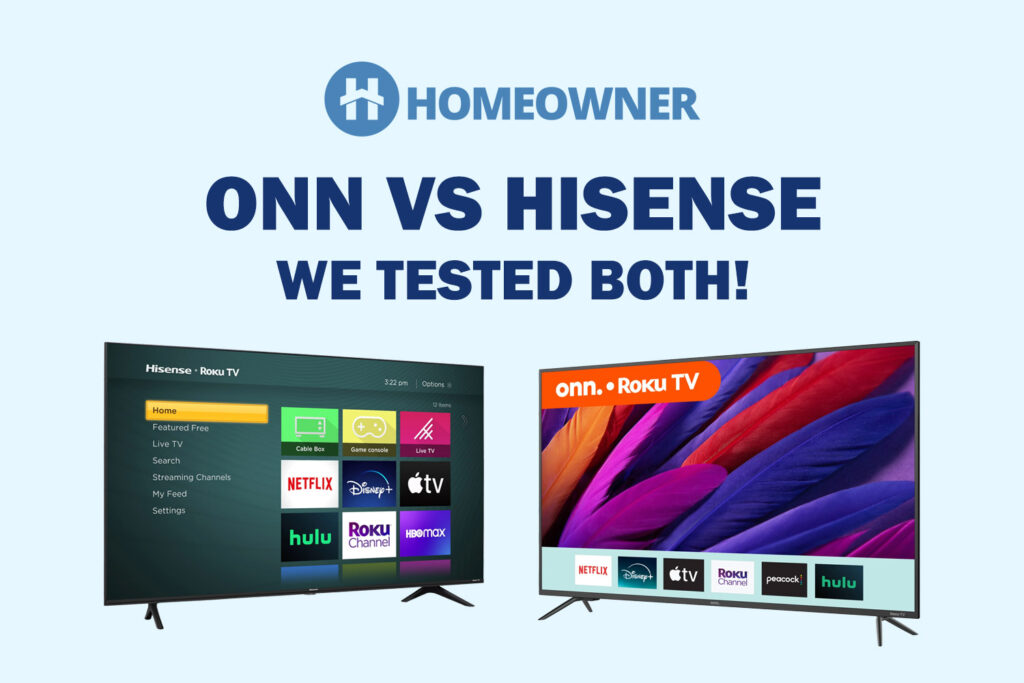In this post:
- 1. Best Overall: Netgear Nighthawk RAXE500
- 2. Best WiFi 7 Router: TP-Link Archer BE9300
- 3. Best for Gaming: ASUS RT-AX86U Pro
- 4. Best Mesh WiFi System: TP-Link Deco XE75
- 5. Best for Security: Synology RT6600ax
- 6. Best for Streaming: Linksys Hydra Pro 6
- 7. Best Budget Option: Reyee RG-E4
- Things To Consider
- Frequently Asked Questions
- Verdict
Are you moving to a new apartment or upgrading your WiFi router to your current one? Do you find it a tiresome task? Well, it isn't. Unlike cable modems, you can use any wireless router. However, pairing a random device is a bad approach.
Understanding your needs, reading reviews, and carefully making decisions is wise. Since you're here, I'm sure you fall into this category. Over the years, I have installed and set up routers in various apartments with different sizes and structures. So, I have a good idea of what works and what doesn't.
Based on that, I have handpicked the top 7 options and reviewed them in detail.
Rest assured that all models featured here have passed intensive tests across multiple parameters, including speed, coverage, network customization, security controls, ease of use, and management, and are well worth the investment.
And to ensure each of you finds an ideal router for your apartment, I’ve included models of all categories: top-tier premium, mid-range, and budget-friendly.
👉 Related: Best 30 New Apartment Gifts in 2025
1. Best Overall: Netgear Nighthawk RAXE500
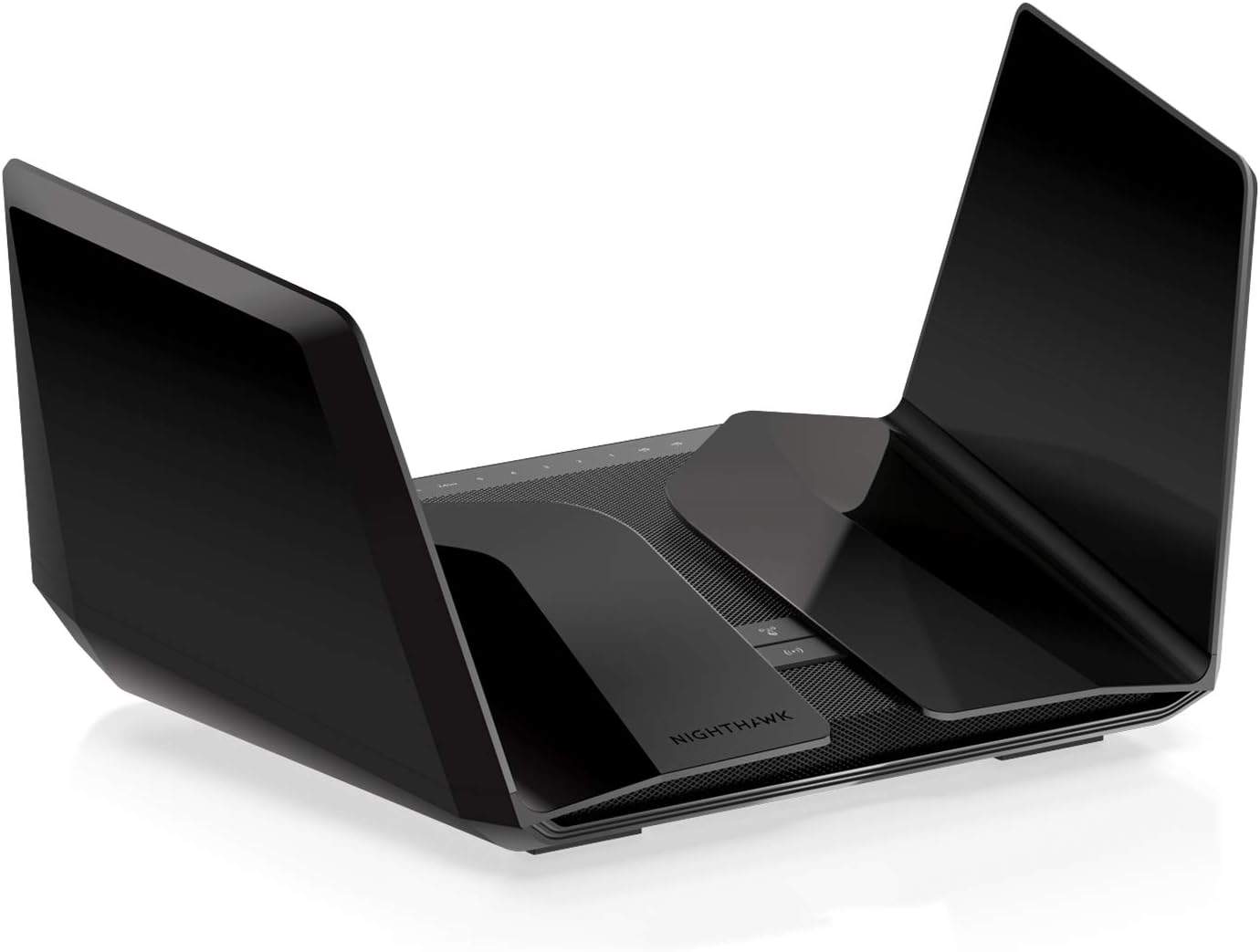
- Wireless Standard: Wi-Fi 6E (802.11ax)
- Band Frequency: Tri-Band
- WiFi Range: Up to 3,500 Sq Ft
- Number of Devices Supported: 60+
- Ports: 1 x 2.5G WAN/LAN + 1 x Gig WAN + 4 x Gig LAN + 2 x USB 3.0
With a look inspired by an alien mothership and powerful features, the Netgear RAXE500 is a prime example of beauty with brains. The functionalities like Wi-Fi 6E, Quad-Core processor, multi-gig port, and long WiFi range make it a perfect choice. Besides, the RAXE500 brings several upgrades over the Nighthawk RAXE300.
WiFi Coverage & Devices Capacity
I put this router under a stress test in my 3,700 Sq Ft two-level house, and it covered almost the entire space, courtesy of its powerful antennas. While it's hard to put it in numbers, I can confirm that the practical range should be around 3,200 Sq Ft.
With beamforming support, it worked well on 53 connected devices simultaneously without any lags or hiccups. Some of these were TVs streaming 4K videos, smartphones browsing social media, tablets streaming Netflix and YouTube, and a PS5 gaming console.
Speeds & Performance
With the tri-band setup, the additional 5 GHz band is used to communicate with the satellites, and the other two communicate with the client devices, thereby receiving a greater speed output of 11000 Mbps. The throughput is split as follows:
| 6 GHz: 4800 Mbps | 5 GHz: 4800 Mbps | 2.4 GHz: 1200 Mbps |
Such higher speed capability readily makes it the best choice for fiber internet. In the proximity test with the AT&T Fiber 2 Gig plan, the download speed on my MacBook Pro was recorded at 1820 Mbps, while the upload speed scored 1657 Mbps.

Taking the laptop a distance away at 50 feet, speeds dropped by around 40%, valuing at 1090 Mbps and 992 Mbps, respectively. While the 2.4 GHz isn’t as fast as 5 GHz, it still managed 579 Mbps in download and 270 Mbps in upload.
Nevertheless, the speeds allow you to stream all OTT platforms in 4K and play online games alongside but still leave enough bandwidth to execute tasks like browsing the web, sending emails, and attending Zoom calls.
Security Features
Security-wise, there isn’t much for free despite the premium price. It only offers some basic features like WPA2/WPA3 security standards and a VPN server.
With such features in place, data over the network is shared in an encrypted form, which is comparatively safer. But Netgear Armor is a worthy premium security that comes on a 30-day trial, after which you can choose to continue it.
With it, you get access to features like anti-malware, powerful parental controls, a firewall, and blocking unauthorized access.
Conclusion
Overall, Netgear RAXE500 is a top-rated router to use in large apartments. It offers reliable and efficient performance with a multi-gig connection. The new 6 GHz band minimizes congestion and gives you clear signals throughout the day.
Plus, its no-nonsense hardware keeps your home network up and running without any connection drop. However, price is the sole retracting aspect of this device, but its top-tier performance readily justifies it.
For more specific details, read the full review.
Pros
- Tri-band WiFi 6E setup
- Excellent WiFi coverage
- Multi-gigabit speeds
- Handles multiple devices
- Robust hardware
- Stable network performance
Cons
- Expensive
- No QoS prioritization
- Paid advanced security
2. Best WiFi 7 Router: TP-Link Archer BE9300
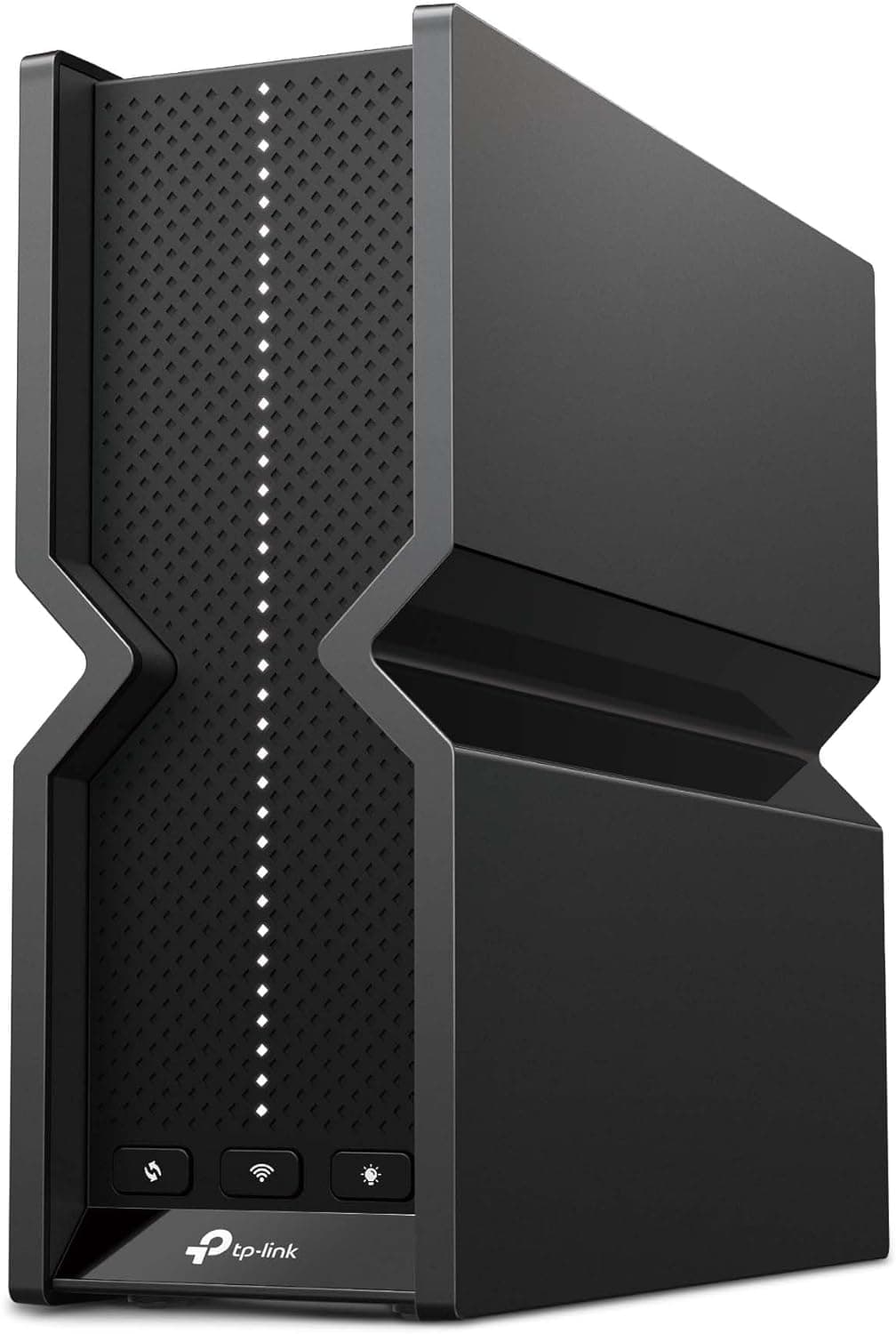
- Wireless Standard: Wi-Fi 7 (802.11be)
- Band Frequency: Tri-Band
- WiFi Range: Up to 2,000 Sq Ft
- Number of Devices Supported: 200
- Ports: 1 x 2.5G WAN + 4 x 2.5G LAN + 1 x USB 3.0
If your apartment is not very large and are looking to future-proof it with a WiFi 7 router, TP-Link Archer BE9300 is your best bet. The latest wireless standard coupled with 320 MHz ultra-wide channels, five multi-gig ethernet ports, and a plethora of networking techs, cuts through any congestion and delivers a solid performance.
WiFi Coverage & Devices Capacity
Archer BE9300, with its six internal antennas, claims a stipulated range of 2,000 Sq Ft. To test it out, I installed it at my 2,500 Sq Ft lab, and the signals reached every cover of it. Putting things into perspective, the router is a smart choice for a 1,500-1,800 Sq Ft space or a two to three bedroom small to medium apartment.
Despite a lower range than my top pick, the signals were stable, thanks to its beamforming tech. It also entails a mesh tech, so you can pair a similar router and expand the coverage. Coming to client connections, at most, I could connect over 91 devices at once. Thanks to MU-MIMO and OFDMA tech.
Note: WiFi 7 is still in its initial days, and there’s a lot to explore. With proper integration of AFC (Automated Frequency Coordination), the range of the 6 GHz band is expected to be about 25% more in WiFi 7 than in WiFi 6E.
P.S. In the upcoming models, you can expect a much better range than BE9300.
Speeds & Performance
Archer BE9300 boasts a tri-band setup with a maximum data transmission ability of 9,200 Mbps, with respective speeds on each band as follows:
| 6 GHz: 5760 Mbps | 5 GHz: 2880 Mbps | 2.4 GHz: 574 Mbps |
Using an AT&T 5 Gig plan and a OnePlus 11 phone running the Analiti app to collate the results, I got around 3.66 Gbps of download throughput with my phone 25 feet away from the router. This makes BE9300 one of the fastest wireless routers.
The upload speed at such a distance was around 3.17 Gbps. Please Note these results were obtained with five 4K streams running in the background.
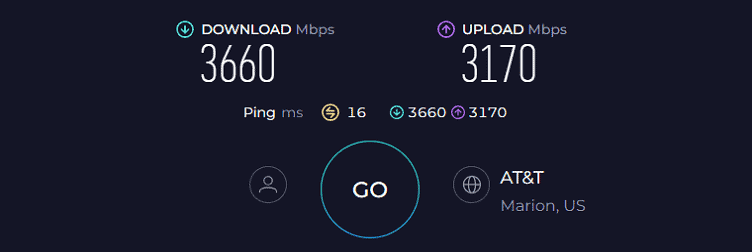
Moving on, the router performed extremely well with respective download and upload throughput faring at 1.16 Gbps and 954 Mbps at 40 feet. That’s almost a 40% improvement from similarly priced WiFi 6 routers.
Not only speed, but BE9300 passed my informal network saturation test without any issues. After connecting to multiple clients, I streamed 4K videos on a MacBook Air M2 (15”), listened to music on an iPad, and BBC news feed on a smart TV. All the streams were delivered without a frame freeze, skip, or glitch.
Unlike my previous pick, this one has a QoS feature that lets you prioritize traffic or applications as per your needs. With it enabled, I could play Overwatch at 10ms ping and 124 FPS despite being active on the aforementioned tasks.
Security Features
Right out of the box, the HomeShield Basic entails features like WPA3, VPN, and access control to encrypt your passwords and identity for safe browsing. Besides, you can provide temporary access to your guests with its guest network feature and keep malware and intrusions away from the network with its SPI firewall.
Conclusion
Welcome to the WiFi 7 era that promises data speeds so fast that leaves older wireless protocols and wired gigabit Ethernet in the dust. TP-Link BE9300, despite not being heavily priced ensures seamless connectivity across a place. Highly recommended for those who want to future-proof their apartment network.
Pros
- WiFi 7 standard
- Decent WiFi range
- 320 MHz WiFi channels
- Five 2.5 Gig Ethernet ports
- Easy to install and setup
- Handles 90+ clients
Cons
- Advanced security features are paid
3. Best for Gaming: ASUS RT-AX86U Pro
Do you and your family members heavily participate in online gaming? Consider the ASUS RT-AX86U Pro gaming router.
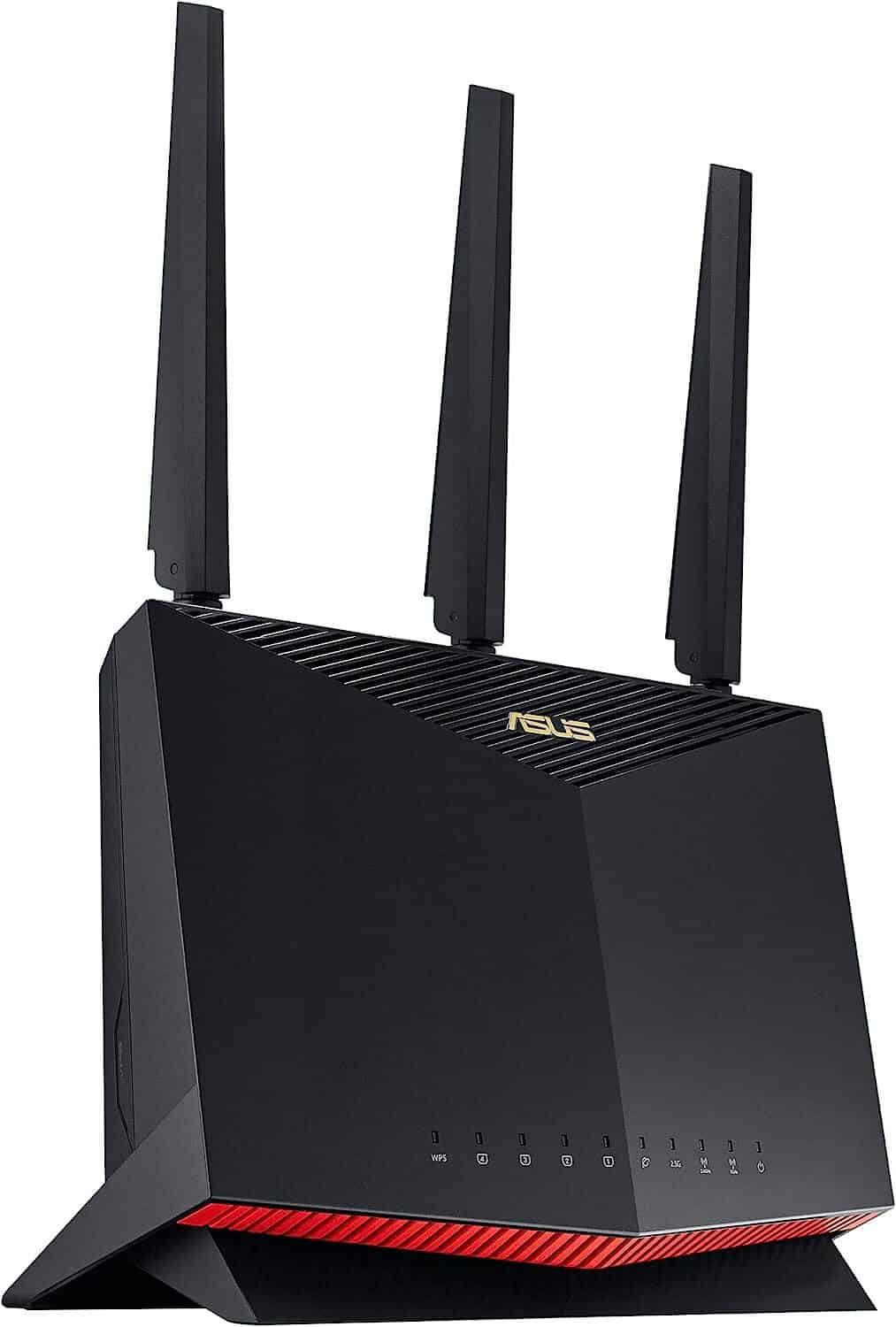
- Wireless Standard: Wi-Fi 6 (802.11ax)
- Band Frequency: Dual-Band
- WiFi Range: Up to 2,500 Sq Ft
- Number of Devices Supported: 35
- Ports: 1 x 2.5G WAN + 1 x Gig LAN/WAN + 4 x Gig LAN + 1 x USB 3.2 Gen 1 + 1 x USB 2.0
For professional gamers, a large bandwidth isn’t the only hero, you need other specialized actors (aspects) to contribute. While my top recommendations lack a few, Asus RT-AX86U Pro has got it all. Aside from speed and a multi-gig port, it adds a few gaming-oriented features to deliver unmatched low-latency gameplay.
WiFi Coverage & Devices Capacity
Based on my week of testing in my client’s 2,300 Sq Ft house, the RT-AX86U Pro was equal parts a reliable apartment router and a gaming companion.
Its three external antennas with beamforming support ensured none of the corners were left void of strong signals. So you can blindly trust it to transmit strong and stable signals throughout your two-bedroom apartment.
Moving on, I had around 42 smart devices including smartphones, laptops, a gaming PC, a PS5 console, and smart home appliances, and all could run well at once. The credits go to MU-MIMO and OFDMA to manage signal transmission efficiently.
Speeds & Performance
RT-AX86U Pro is a dual-band WiFi 6 router with a combined throughput rating of AX5400, with the individual capability of each band as follows:
| 5 GHz: 4804 Mbps | 2.4 GHz: 861 Mbps |
With the AT&T 2 Gig plan in place, the 25 feet test had a peak download throughput of 1.62 Gbps. Meanwhile, the upload speeds maxed out at 1.56 Gbps.

That’s around 10-15% higher than RT-AX86U and 18-20% than routers around $200. With that said, the bandwidth available at 50 feet dropped to 616 Mbps for downloads and 565 Mbps for uploads.
The 86U Pro did well at punching strong signals through walls and ceilings, and even in the outskirts (at 75 feet), it pushed 106 Mbps and 81 Mbps for downloads and uploads, respectively. That’s not it. Its equipped QoS feature comes in handy, especially during peak hours. Here’s how:
With it turned off and multiple devices streaming audio and videos in the background, Overwatch recorded a decent 26ms ping and 81 FPS. Upon turning on the feature, the values rose to 12ms and 121 FPS, translating to an exceptional gaming performance.
The numbers and, in turn, performance were still decent courtesy of features like game boost, triple acceleration, and game mode that works in tandem with a powerful processing setup.
Security Features
Asus bundles its AiProtection Pro software to secure your network. Aside from a periodic security assessment and blocking dangerous websites, the package includes a thorough intrusion prevention feature to block zombies and botnets from attacking your computers. The best part is that it's lifetime free.
Conclusion
All in all, the Asus RT-AX86U Pro with the features and performance it beholds, checks all the boxes of a top gaming performer. While it kicks your play up by a notch with multi-gig inputs and higher speeds coupled with low ping, it protects your network with cost-free advanced security tools.
But its device-handling ability is nowhere near the top recommendations, the reason why it’s ranked third.
Pros
- Excellent throughput
- Multi-gig ports
- Gaming-oriented features
- Lifetime free security
- Great range
- 2-year warranty
Cons
- Middling device-handling ability
4. Best Mesh WiFi System: TP-Link Deco XE75
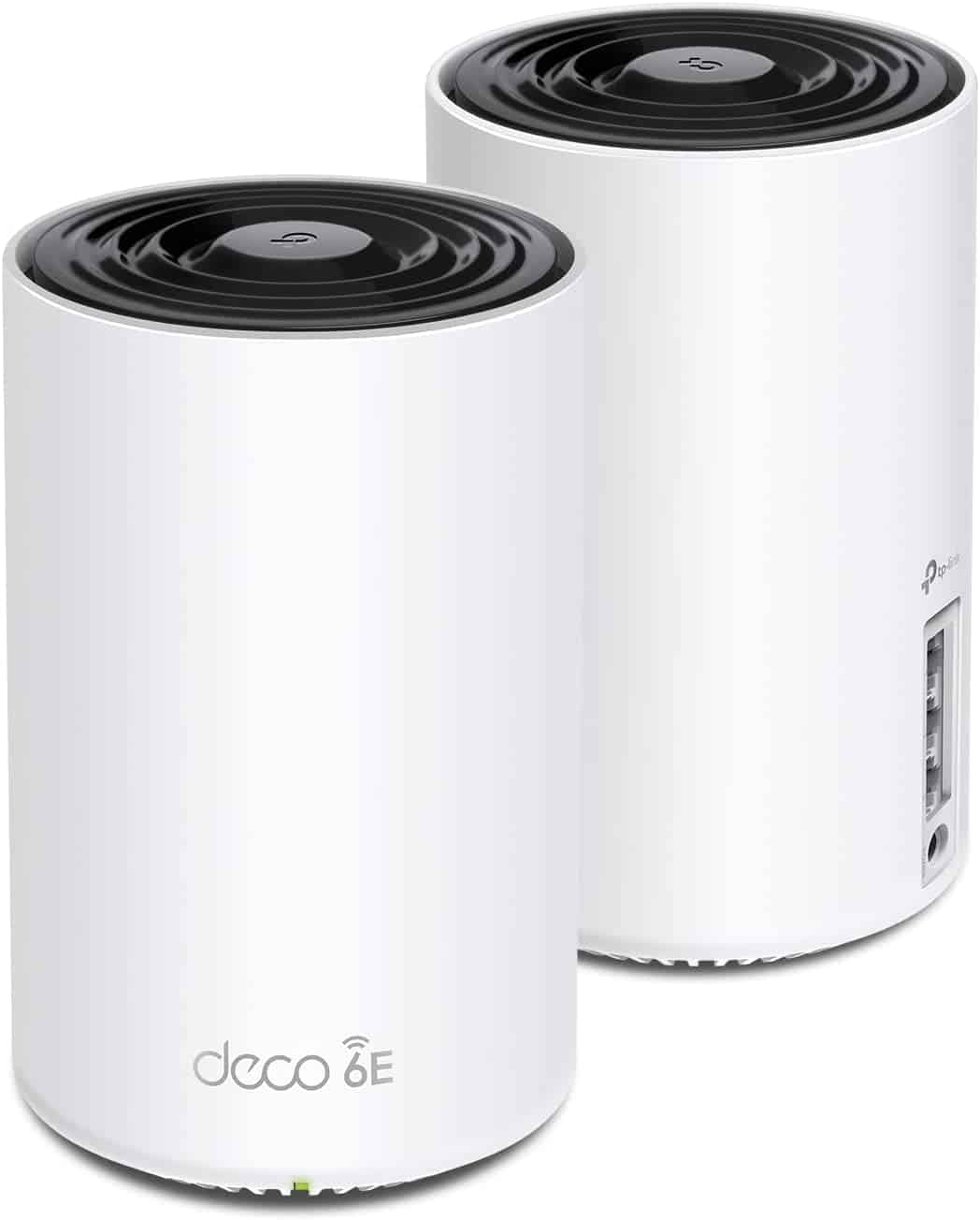
- Wireless Standard: Wi-Fi 6E (802.11ax)
- Band Frequency: Tri-Band
- WiFi Range: Up to 7,200 Sq Ft
- Number of Devices Supported: 200
- Ports: 3 x Gig LAN
When it comes to large homes and weakened signals, the first thing that comes to mind is a mesh system. TP-Link Deco XE75 is the best option for apartments. Its WiFi 6E standard, long-range, and plenty of networking technologies deliver seamless connectivity throughout the space.
WiFi Coverage & Devices Capacity
Deco XE75 did quite well in real-world testing at my client’s corporate establishment. The three-piece kit comes at a stipulated range of 7,200 Sq Ft, the highest of the lot, and managed to leave no WiFi dead spots throughout the available 6,500 Sq Ft space. You can add a fourth node if the setup falls short.
Moving on, the WiFi analyzer app showed an equal distribution of signals throughout the space, thanks to its beamforming support. So, even in the corners, I could stream HD music without any lags.
Within the encased space, the router could handle up to 85 smart devices engaged in a mixed range of tasks like gaming, streaming, video conferencing, online shopping, online classes, and others. None of the devices produced any lags, thanks to the MU-MIMO and OFDMA tech.
Speeds & Performance
Deco XE75 with a new uncongested 6 GHz band can reach theoretical data rates of up to 5400 Mbps, with respective ability on each band as follows:
| 6 GHz: 2402 Mbps | 5 GHz: 2402 Mbps | 2.4 GHz: 574 Mbps |
Using the Ookla speed test and streaming four UHD videos in the background, the mesh system pushes 871 Mbps for downloads and 765 Mbps for uploads, with a 1 Gig AT&T plan. Note that the tests were measured on MacBook Air M2 25 feet away.

But as standard with most routers, Deco XE75’s throughput fell off quickly at a long distance when the 6 GHz transmissions petered out.
At 50 feet, the router could send data at 415 Mbps and 249 Mbps for downloads and uploads, respectively. The signal still managed to remain online at 90 feet, with 31 Mbps available, enough for basic e-tasks.
When it comes to performance, the mesh system worked well for plenty of uses, from online shopping to online gaming, emails, and large downloads.
At a time, I streamed 4K videos on my MacBook Air M2, HD audio on my smartphone, and my Dell XPS laptop tuned into an internet radio station. The video & audio streams came through perfectly.
Security Features
The security of Deco XE75 is rather decent, as its HomeShield Basic software entails features like WPA3, VPN, guest network, SPI firewall, and auto-firmware update. These work in tandem to keep your network safe from online threats.
But advanced features like malware protection, blocking malicious websites, and others, are only accessible on paying a monthly/yearly subscription.
Conclusion
If you’re looking for a WiFi 6E mesh at a reasonable price, Deco XE75 comes as economical and one of the best-performing kits out there. It goes in toe toe-to-toe with top-rated mesh routers out there and delivers throughput high enough to ramp through most online tasks.
However, the lack of a multi-gig Ethernet port is the reason it is ranked fourth. For more information, you may check out its complete review.
Pros
- Tri-band + WiFi 6E
- Excellent throughput
- Reasonable price
- Excellent coverage
- Handles 80+ devices
- Two-year warranty
Cons
- No multi-gig port
5. Best for Security: Synology RT6600ax
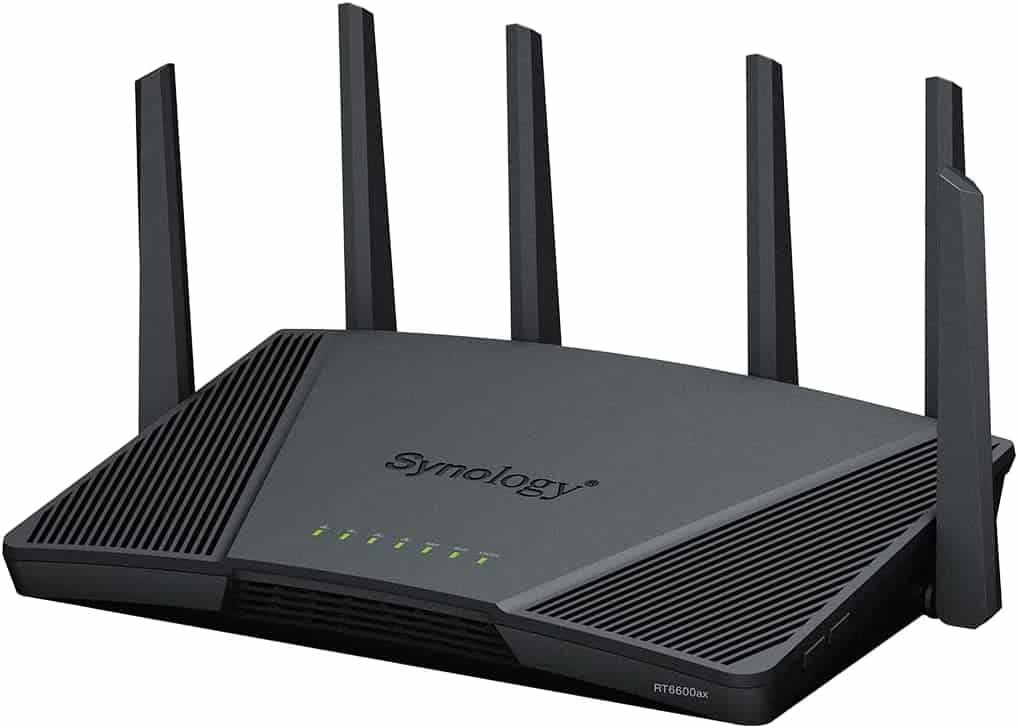
- Wireless Standard: Wi-Fi 6 (802.11ax)
- Band Frequency: Tri-Band
- WiFi Range: Up to 3,000 Sq Ft
- Number of Devices Supported: 60
- Ports: 1 x 2.5G WAN + 3 x Gig LAN + 1 x USB 3.2 Gen 1
Apartments that indulge in the transfer of sensitive data demand utmost importance to security, among others, and for them, Synology RT6600AX should be an ideal choice. Besides that, its powerful antennas, multi-gig LAN, and an extra 5 GHz band work to deliver a powerful performance.
Besides, I tested it alongside its predecessor, RT2600AC, and found the performance of the former much superior.
WiFi Coverage & Devices Capacity
The RT6600AX, despite being a standalone router, boasts a stipulated range of 3,000 Sq Ft, making it a smart pick for a three-bedroom apartment.
To test it out, I installed it centrally at my Nashville’s 2,500 Sq Ft test lab, and the router with its six antennas managed to fill each cranny with powerful signals.
As revealed on the WiFi analyzer app, the signal density was almost constant throughout, and the credit primarily goes to its beamforming tech.
Within the space, I could connect up to 51 smart devices engaged in a mixed range of tasks, be it streaming, video conferencing, online gaming, or others. The hero is obvious here: MU-MIMO and OFDMA.
Speeds & Performance
The RT6600AX is a tri-band WiFi 6 router with a maximum data transmission ability of 6600 Mbps, with respective speeds on each band as follows:
| 5 GHz (1): 1200 Mbps | 5 GHz (2): 4800 Mbps | 2.4 GHz: 600 Mbps |
With the AT&T 1 Gig plan, RT6600AX turned in mixed results on my throughput performance tests. It had a strong showing on the near-band tests, as its score of 860 Mbps for downloads and 749 Mbps for uploads stays neck-to-neck with my previous recommendation despite lacking a 6GHz band.

The speeds, however, stayed a bit behind at 50 feet, with downloads and uploads valued at around 306 Mbps and 241 Mbps. Nevertheless, the available speeds can ramp through 3-4 video streams, casual online games, and other online tasks in a breeze.
Security Features
Synology is hell-bent on the security of its users, and the set of advanced features it brings are enough to keep your network and computers safe.
The notable one is threat protection, which involves keeping a thorough tab and blocking any malicious websites, devices, and agents. Other than that, its guest network feature lets you provide temporary network access to your guests.
Conclusion
Overall, Synology RT6600AX offers the right blend of performance, coverage, and security at a price that might seem a bit steep for some. An extra 5 GHz band and a multi-gig port deliver additional bandwidth for gamers and streamers.
But it's on the expensive side, a reason why it's ranked fifth. Read the full review.
Pros
- Advanced security tools
- User-friendly interface
- Solid wireless performance
- Multi-gigabit LAN/WAN
- Great WiFi range
Cons
- Pricey
6. Best for Streaming: Linksys Hydra Pro 6
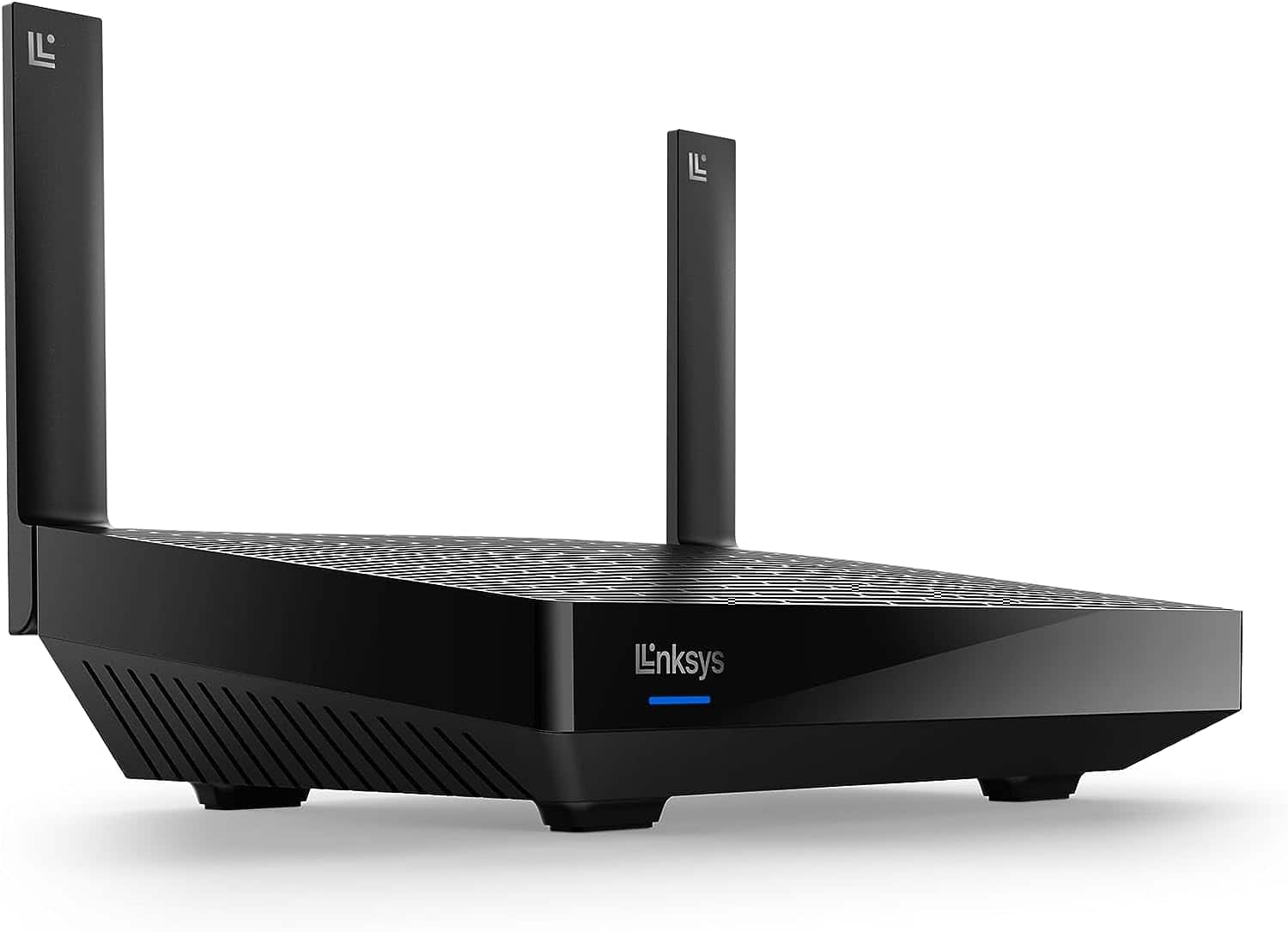
- Wireless Standard: Wi-Fi 6 (802.11ax)
- Band Frequency: Dual-Band
- WiFi Range: Up to 2,700 Sq Ft
- Number of Devices Supported: 30
- Ports: 1 x Gig WAN + 4 x Gig LAN + 1 x USB 3.0
If security doesn’t stand on top of your list and my previous picks feel a tad heavy on your pocket, take a look at this Linksys Hydra Pro 6. Dual-band Wi-Fi 6 and fast speeds at a consistent pace make it a great choice for streaming.
And if you’re a loyal Linksys customer, you’d notice the feature upgrades it brings to ultimately deliver a much better performance.
WiFi Coverage & Devices Capacity
Coming as a replacement to Hydra 6, Linksys made a few tweaks in the antennas to offer a boosted range of 2,700 Sq Ft. However, the router left a few dead spots at my Nashville test lab in my real-life testing.
To put things in perspective, the router is a perfect fit for any two to three-bedroom apartment with an area of around 2,300 Sq Ft. And the signals were stable, thanks to beamforming and MU-MIMO.
It also entails a mesh tech that lets you expand the range by adding a Linksys Velop mesh node or two.
To test its device handling ability, I tried connecting 30 smart devices (as claimed by the manufacturer), but the network blanked post 26. That’s still decent for a family of six or seven people.
Speeds & Performance
Hydra Pro 6 has a speed rating of AX5400, which means it’s capable of reaching maximum data rates on each band as follows:
| 5 GHz: 4804 Mbps | 2.4 GHz: 574 Mbps |
The router employs WiFi 6, including 160 MHz channel bandwidth and OFDMA, to deliver decent results in my throughput tests.
With AT&T's 1 Gig plan in place, its score of 765 Mbps for downloads in close proximity test was around 12% less than my previous recommendation. This is what you get from having an additional band and wide channels.
The upload speeds, meanwhile, were valued at 689 Mbps.

Nevertheless, such speeds are suitable for any bandwidth-hogging tasks like online gaming and streaming. On the 50 feet test, the Pro 6 scored 287 Mbps and 203 Mbps, respectively, for downloads and uploads. That’s quite a drop, but is pretty standard with most routers.
Security Features
Security, however, isn’t top-tier with Hydra Pro 6, especially when putting aside secure routers like RT6600AX. There isn’t any advanced feature on offer, premium or free, but its basic features like WPA3, VPN, access control, and guest network are suitable for most household network setups.
Conclusion
If you seek a good home internet router with a simple setup, get the Linksys Hydra Pro 6. With a range of advanced technologies, it delivers speedy and reliable performance. As an extra benefit, it enables you to establish a comprehensive mesh network throughout your home, requiring a second Linksys router.
Pros
- Dual-band Wi-Fi 6 setup
- Mesh tech support
- 160 MHz channel for fast speeds
- Decent wireless range
- Easy to set and configure
Cons
- Middling device handling ability
- Average security features
7. Best Budget Option: Reyee RG-E4
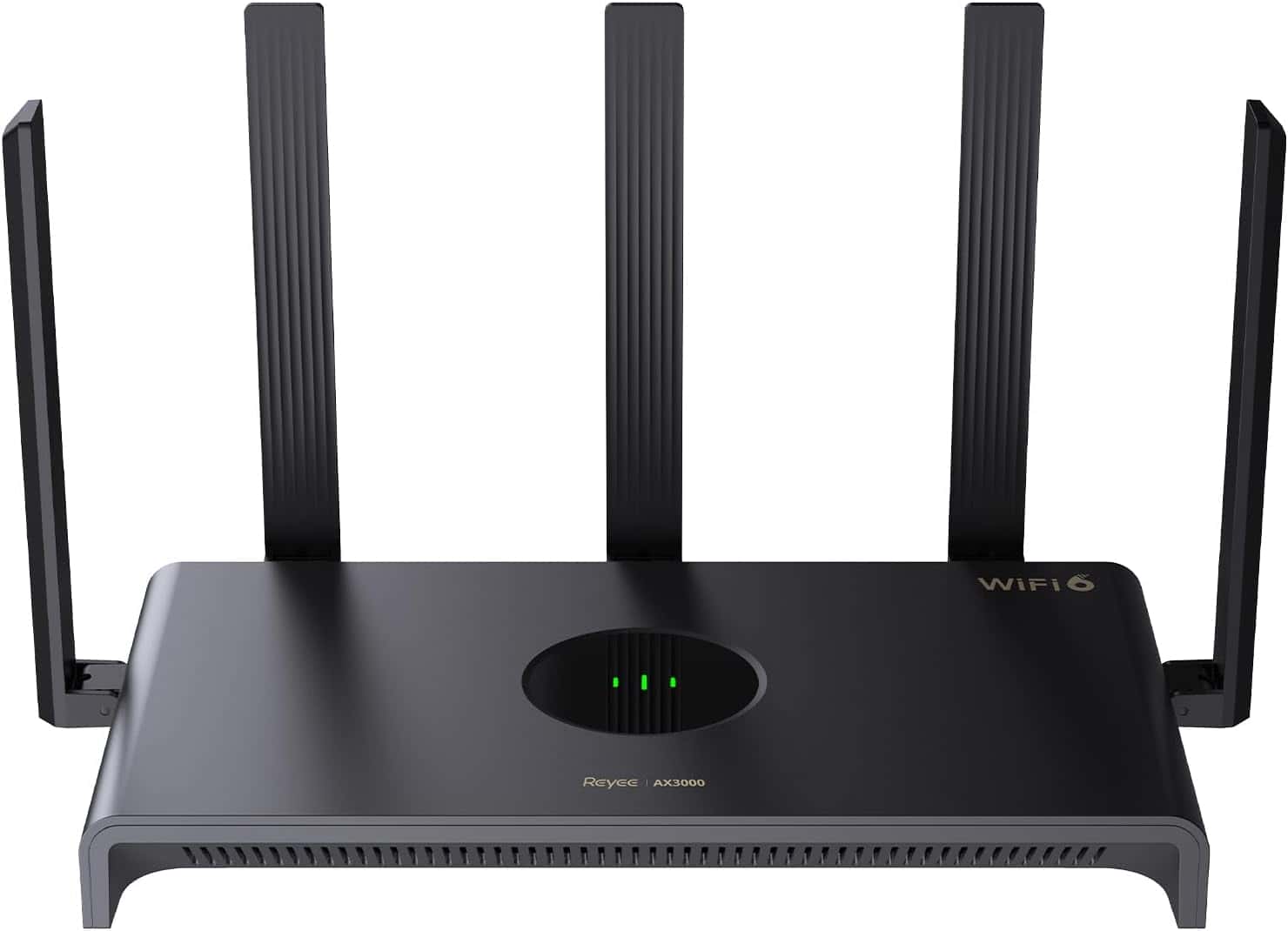
- Wireless Standard: Wi-Fi 6 (802.11ax)
- Band Frequency: Dual-Band
- WiFi Range: Up to 3,000 Sq Ft
- Number of Devices Supported: 128
- Ports: 4 x Gig LAN/WAN
Last but not least, presenting a budget yet dependable option for your residential apartment, Reyee RG-E4. In fact, it outperforms some top budget routers in this regard. Aside from that, its throughput cap, port setup, link aggregation, and powerful processor keep most of your online tasks up and running.
WiFi Coverage & Devices Capacity
Reyee RG-E4 has four high-gain antennas to claim a theoretical range of 3,000 Sq Ft, edging a bit ahead of my previous recommendation. Coupled with beamforming tech, the antennas could cover my 2,500 Sq Ft test lab in a breeze, and I could shop online, even seated at the corners.
The best part of it, however, is its “one-click Reyee mesh”, where you can pair another Reyee router to take the signals to distant spaces. That’s a pretty handy feature to have.
Moving on, the device even passed my informal saturation test with distinction. Here, I paired smart devices, including laptops, smartphones, and others, totaling 56. And with MU-MIMO at disposal, none of the devices produced any jitters or hiccups.
Speeds & Performance
Reyee RG-E4 is a WiFi 6 router with dual-transmission ability and a combined throughput capacity of 3000 Mbps. The respective ability of each band is as follows:
| 5 GHz: 2401 Mbps | 2.4 GHz: 574 Mbps |
Based on my speed tests using the Ookla app with an AT&T 500 Mbps plan in place, I found Reyee RG-E4 to be a competent and reliable router that punches above its class. To start, at 25 feet, it moved 378 Mbps to the Dell XPS test system for downloads, while it was around 310 Mbps for uploads.
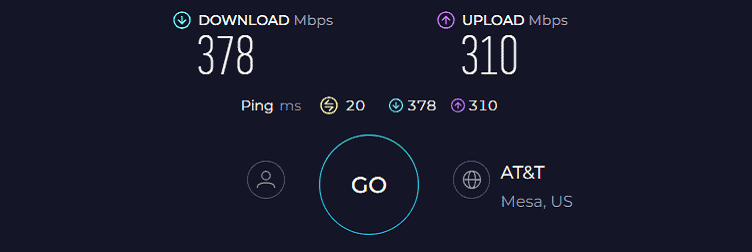
With 50 feet separating the test system and router, respective throughput for downloads and uploads fell to 131 Mbps and 97 Mbps. But, the speeds seem to drop even further during peak hours, which might be a potential limitation.
The hero aspect of the router, however, is its “gaming traffic prioritization”, which generally is missing from routers in this range. It automatically detects and optimizes gaming packets, so I could play Overwatch at 21ms ping and 75 FPS, which is great.
Security Features
The security of Reyee RG-E4 is on levels with my previous pick, as there are similar features like WPA3, OpenVPN, PPTP, and guest network. Other than that, you can even blacklist certain devices or websites. With these in hand, you can browse in peace without worrying about compromising your privacy and security.
Conclusion
With an excellent range and surprisingly strong mid-range performance, it’s hard to believe that Reyes RG-E4 sells at $100. It even goes the extra mile with the ability to establish a mesh network, link aggregation, and gaming prioritization.
However, the signals seem to drop often, especially at long distances, which is the reason it’s ranked at the bottom.
Pros
- Inexpensive WiFi 6 router
- Excellent range and performance
- Mesh tech
- Gaming network prioritization
- Port Aggregation
Cons
- Signal drops at a distance
Things To Consider
Consider the following aspects to find a good WiFi router for your apartment:
- Internet Plan Support: Consider your subscribed plan and ensure the router you get can handle it.
- WiFi Range: To get strong signals in all rooms, the kitchen, etc., your router should have a WiFi range comparable to or higher than the size of your place.
- Port Setup: Say your setup requires pairing USB devices such as a pen drive or a console; you must get at least one USB 2.0/3.0 port.
- Latest Hardware: For future-proofing and better performance, the routing unit should come with Wi-Fi 6/6E, dual or tri-band WiFi, MU-MIMO, OFDMA, QoS, and at least a dual-core processor with 128 MB RAM.
Frequently Asked Questions
The average one-bedroom size is around 600-800 Sq Ft, which exceeds 2,500 Sq Ft for bigger ones. So, a router with a relevant range to encase your entire space with a powerful internet connection is needed for an apartment.
Mesh systems are generally known for their long coverage. And so, if your space exceeds 3,000 Sq Ft, it would be ideal to establish a mesh network in your space.
Verdict
Big or small, I have reviewed some of the best-suited options for apartment living. I hope this article helped you make an informed purchase decision. However, if you are still confused, here are my personal favorites:
- If you are looking for a premium future-proof device, the Netgear Nighthawk RAXE500 should be your ideal pick.
- And, if you have a large house measuring above 4,000 Sq Ft, TP-Link Deco XE75 is a great mesh router.
- If you have a constrained budget yet are looking for a router that delivers reliable performance, get Reyee RG-E4.
Thanks for reading!


